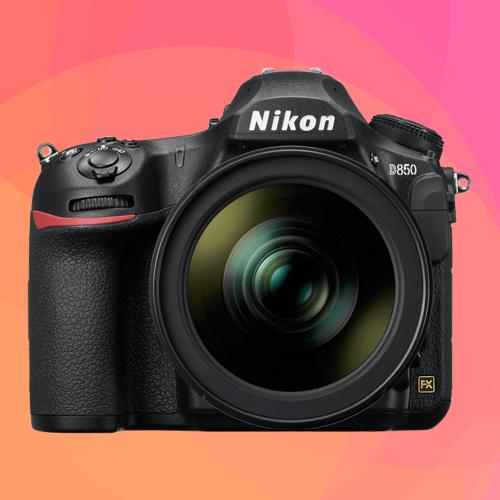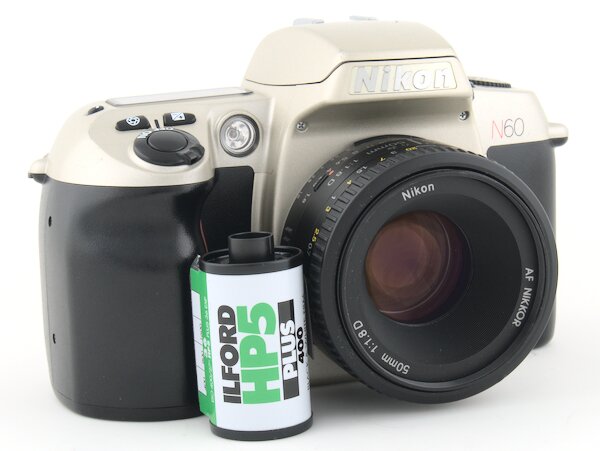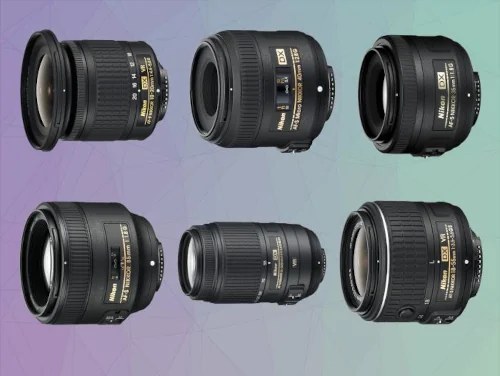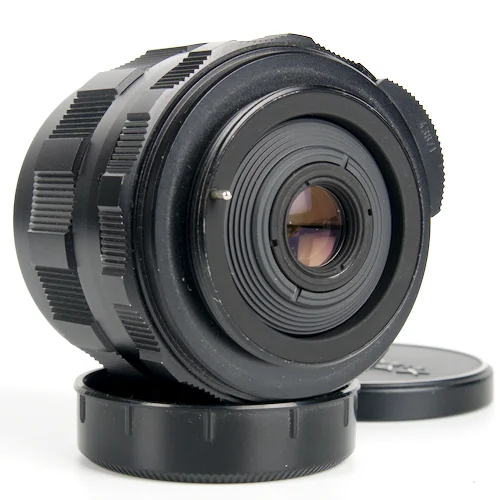
The M42 Mount - History, Cameras, and Adapting the Lens Mount
- Nathaniel Stephan
- M42
- September 7, 2023
Table of Contents
The M42 mount can be referred to as the “Universal thread mount”, “Praktica thread mount”, and “Pentax screw mount.” It was used for several decades by many manufacturers.
History of the M42 Mount
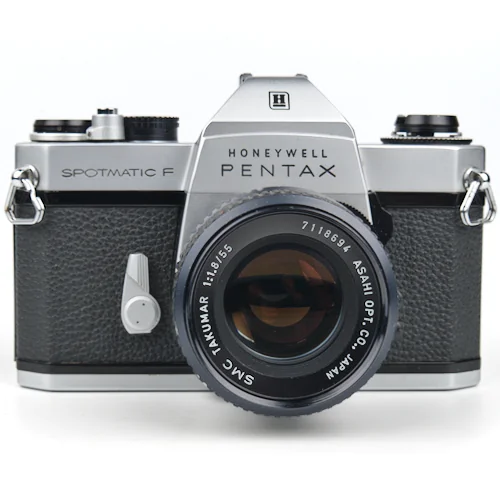
The M42 lens mount is a screw thread mounting standard designed for 35mm film cameras. One example being the Pentax Spotmatic. Its technical specification is the M42 × 1mm standard, indicating a metric screw thread with a 42mm diameter and a 1mm thread pitch.
Its journey began when the M42 mount was first used by East German brands VEB Zeiss Ikon in their Contax S model in 1949 and by KW in their Praktica model the same year. These pioneering brands eventually merged to form the Pentacon brand in 1959. The mount’s significant recognition can be attributed to its association with the Praktica brand.
Its non-proprietary nature meant that it was an attractive choice for many manufacturers. Interestingly, it was also adopted by Pentax, leading to occasional references to it as the “Pentax thread mount”, even though Pentax wasn’t its original creator.
Over time, the M42 mount underwent a series of innovations. From its initial plain stop-down design, manufacturers introduced features to enhance its user experience. One of the early major innovations was the pre-select type, a mechanism that allowed users to pre-select an aperture value without actually closing the aperture.
This was succeeded by the introduction of “auto” lenses, equipped with a pin in the mount that, when pressed, closed the aperture to the chosen setting. The pinnacle of its evolution was arguably the introduction of a link between the camera and lens, which transmitted the lens aperture setting, enabling light metering with the aperture in a wide-open state.
However, like all technologies, the M42 mount saw its production wane in the late 1970s and early 1980s. The Russian Zenit range was a notable exception that continued its production. Brands like Pentax transitioned to newer mounts, such as the Pentax K mount from 1975 onwards, and Praktica shifted to the electronic B-Mount in 1979. Yet, the legacy of the M42 mount was briefly revived with the introduction of the Cosina-made Voigtländer Bessaflex TM in 2003, though this too was discontinued in 2007.
In today’s modern era of photography, the M42 mount’s legacy persists. Its simplicity and the vast array of lenses available have led to the creation of M42 adapters for many of today’s lens mounts. These adapters bridge the past and present, allowing photographers to use M42 lenses on contemporary cameras with different lens mounts.
In summary, the M42 lens mount, which originated in the late 1940s, emerged as a universal standard embraced by numerous camera manufacturers. Its non-proprietary design and subsequent innovations cemented its place in photographic history. While its mainstream popularity diminished in the late 20th century, adapters have ensured it remains relevant in the world of modern photography.
Advantages of M42 Mount
The M42 lens mount, often referred to as the “Universal thread mount” or “Praktica thread mount”, has been a favorite among photographers for decades. While newer mounts have emerged over the years, the M42 continues to hold a special place in the hearts of many, and for good reason. Here are some of the key advantages of the M42 mount:
Flexibility for Working with Multiple Lenses
One of the standout features of the M42 mount is its flexibility. It allows photographers to work with a wide range of lenses, from vintage gems to more modern optics. This versatility means that photographers aren’t restricted to a specific brand or type of lens, offering them a broader spectrum of creative possibilities. Whether you’re a portrait photographer looking for that perfect bokeh or a landscape enthusiast seeking sharp, wide-angle shots, the M42 mount has a lens that can cater to your needs.
Variety of Accessories Available
The M42 mount isn’t just about lenses. Over the years, a plethora of accessories have been developed specifically for this mount. From extension tubes for macro photography to various filters and adapters, the M42 ecosystem offers a diverse range of tools that can enhance and expand your photographic capabilities. This variety ensures that photographers can tailor their setup to suit specific requirements, making the M42 mount a versatile choice for various photography genres.
Easier to Repair and Modify
Given its simpler mechanical design, the M42 mount is generally easier to repair and modify compared to more complex, modern mounts. This is a boon for DIY enthusiasts and those who prefer to maintain their gear personally. The straightforward construction of many M42 lenses means that common issues can often be resolved without the need for specialized tools or expertise, saving both time and money.
Possibility for Third-Party Adaptations
The non-proprietary nature of the M42 mount has led to a surge in third-party adaptations. Many companies and independent craftsmen have developed adapters that allow M42 lenses to be used on a variety of modern camera bodies, from DSLRs to mirrorless systems. This adaptability ensures that even as camera technology evolves, M42 lenses can remain relevant and usable, providing photographers with a blend of vintage charm and modern functionality.
Cost-Effective Option Compared to Other Lens Mounts
Last but not least, the M42 mount often presents a more cost-effective option compared to other lens mounts. Many M42 lenses and accessories are available at a fraction of the cost of their modern counterparts. This affordability, combined with the mount’s versatility and quality, offers tremendous value for both amateur photographers on a budget and professionals seeking a cost-effective backup or alternative system.
Disadvantages of M42 Mount
The M42 lens mount, while celebrated for its versatility and historical significance, is not without its drawbacks. As with any technology, especially one that has its roots in the earlier days of photography, there are certain limitations that photographers should be aware of. Here’s a closer look at some of the disadvantages of the M42 mount:
Lacking in Contemporary Features
In the fast-paced world of modern photography, technological advancements have introduced a slew of features designed to enhance image quality, ease of use, and overall functionality.
Unfortunately, the M42 mount, given its age, lacks many of these contemporary features. For instance, many M42 lenses do not support autofocus, image stabilization, or electronic aperture control found in the Nikon F-Mount, Pentax K-Mount, Canon FD-Mount. This means photographers relying on M42 lenses may miss out on the conveniences and enhancements that newer lens mounts offer, potentially limiting their creative possibilities.
Not Compatible With Many Cameras and Lenses on the Market Today
While the M42 mount is renowned for its universality in its heyday, it’s essential to note that it’s not natively compatible with many of the cameras and lenses available today. As camera manufacturers have moved on to develop their proprietary mounts and systems, the M42 has become somewhat of a relic.
While adapters are available to bridge the gap, they can introduce their own set of challenges, such as loss of functionality or potential image quality degradation. This lack of direct compatibility can be a hindrance for photographers looking to seamlessly integrate M42 lenses into a modern setup.
Difficult to Attain Quality Images Due to Inaccuracy in Focus and Exposure Settings
One of the more technical challenges of using M42 lenses, especially for those accustomed to modern optics, is the potential inaccuracy in focus and exposure settings. Given that many M42 lenses are manual focus, achieving sharp focus can be a challenge, especially in fast-paced or dynamic shooting scenarios. Additionally, without electronic communication between the lens and camera, there can be inconsistencies in exposure settings, leading to overexposed or underexposed shots. This requires photographers to have a deep understanding of manual settings and often necessitates a trial-and-error approach, which can be time-consuming and frustrating.
